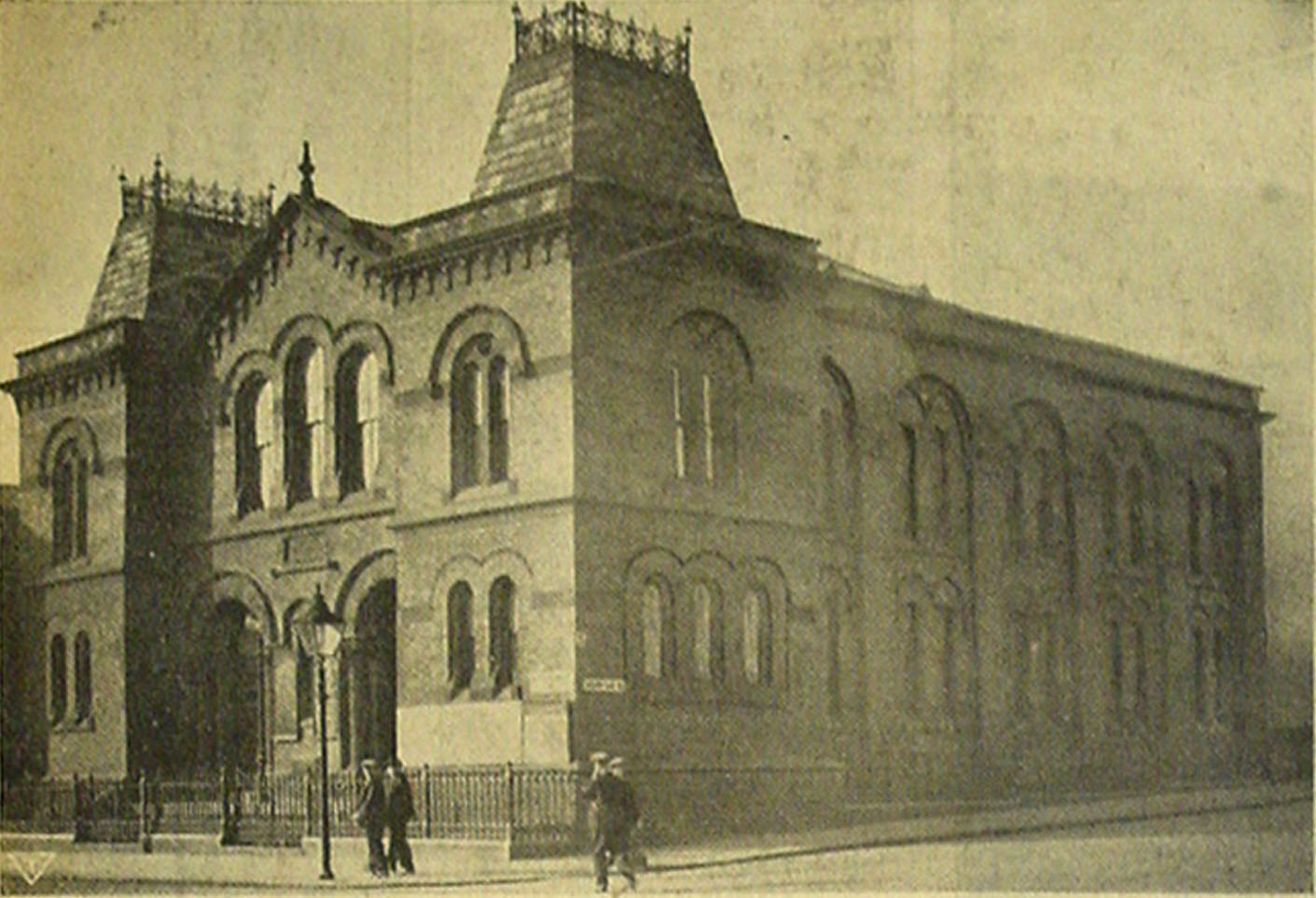 |
Higher Bridge Street Primitive Methodist Chapel, Little Bolton |
 |
 | |
From The Bolton Journal and Guardian, Friday, April 24 1936, reproduced here by the kind permission of the Bolton News.
On June 27th, 1808, the Rev. Hugh Bourne was dismissed from the Wesleyan Society because he insisted on holding open-air “Camp meetings”. That dismissal was the birth of the Primitive Methodist Church.
Bourne’s followers were at first known as Camp Meeting Methodists, but adopted the name Primitive Methodist in 1812.
The first reference to Primitive Methodism in Bolton occurs in 1820, when an open-air service was held opposite the Roebuck, Kay-street. The preacher, a man with a wooden leg, is said to have “discoursed earnestly” to a large gathering.
In 1821 the Manchester Circuit put Bolton on its plan and supplied it with preachers, the Rev. John Verity coming to Bolton in that year. He took his stand near the “Stocks”, and preached to a large congregation. The following day he preached in a timber yard to about 3,000 persons, and again at the “Vitriol Houses” (Cooper’s Square), when 16 persons gave in their names for membership.
In August of that year he collected funds to fit up a room for worship in Ashburner-street. A number of merchants who were going to spend 16/- in drink for a new workman’s “footing” decided to give the money to assist the “Poor Ranters” instead of spending it.
A brick chapel was built in Newport-st in 1822, and a congregation worshipped there until 1865, when they took over the old Baptist Chapel in Moor-lane.
The first Primitive Methodist preachers in Bolton met with considerable opposition. The Rev. J. Butcher was locked up for preaching in the open-air, but when it was found that he was a licensed preacher he was released, having spent one night in prison.
The first Primitive Methodist Chapel in Little Bolton was built just short of a century ago on the site of the present Higher Bridge-st. Church, through the zeal of the Rev. Samuel Tillotson, from whom the proprietors of the firm of Tillotsons Newspapers, Ltd., are descended.
He was superintendent of the Bolton Circuit, and his own description of the founding of Higher Bridge-st. Chapel is contained in a message which he wrote to the Primitive Methodist magazine in April, 1837. (The extract is given by courtesy of Dr. Wardle, principal of Hartley College, and is supplied by the Rev. M. Hoggarth, student librarian).
“Little Bolton – This adjoins Great Bolton, both in Lancashire, there being only a small stream of water, over which several bridges unite the two towns in one. The P.M. Society first established its mission in this place, but till October, 1836, it had no place of worship in Little Bolton.
“The friends feeling this pressing need of a chapel, determined to seek help from God and man. We sought the Lord by prayer, and a suitable piece of ground was found, and the friends came forward beyond all expectations, considering what had recently been given to our chapel in Great Bolton. Our Little Bolton Chapel was opened on Sundays, October 30th and November 6th, 1836, when sermons were preached by Messrs. Armitage, Jones, Gamer, Brailsford, etc. And the collections amounted to nearly forty pounds which, together with the subscriptions and donations amounted to something more than one hundred and sixty pounds.
“The chapel will seat seven hundred people, and we have a large vestry, and a reasonable prospect of doing well. We have commenced a Sunday school with cheering prospects, and Bolton still hopes to see brighter days.
. . . May the Lord powerfully work amongst us, is the prayer of, Yours Respectfully, S. Tillotson.”
The situation was vastly different a century ago from what it is to-day. The mill in Egyptian-st. had not then been built, and Bridge-st. had not long been formed, Bank-st. and Kay-st. having previously carried the traffic to the north from town.
The old chapel was a plain substantial building of stone, with the minister’s house on one side, the land in front being used as a burial ground.
The chapel had a gallery, but at one period there was a floor dividing the chapel into a lower and upper room, the latter being approached by stone steps from the outside.
Until 1868 both public worship and school services were held in the chapel, but in that year a school was erected behind the chapel at a cost of over £1,000.
The congregation at Higher Bridge-st. seems to have had its share of trouble. On a Sunday morning of February, 1871, when Mr. W. Porter, of Bridge-st., was preaching, an ominous crack in the ceiling was heard, and portions of stone fell out of the walls. This continued throughout the day to such an extent that the congregation decided to worship in the schoolroom. In May Mr. Porter was again the preacher, this time in the school, when the roof of the chapel fell in.
In March, 1872, the foundation stone of the present chapel was laid by Mr. Henry Lee, M.P. It is of brick, with stone dressings; is 70ft. long and 45ft. wide, and accommodates 800 worshippers.
Two members of the congregation have been Mayors of Bolton – Ald. Warburton, J.P., and Mr. S. Lomax, J.P. – whilst Mr. W. Bentley, who served for many years as church secretary, is also a Justice of the Peace. In addition Messrs. Anson, Lomax, George Hacking, Joseph Brown, and George Warburton have served as members of Bolton Town Council.
The present ministers are the Revs. Major Dain (Supt.) and James Axson.
| Bolton Home & Contents | ©Lancashire OnLine Parish Clerks | Lancashire Home |